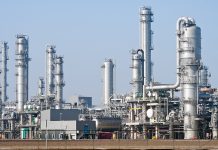Counterfeit ATEX-certified equipment is flooding industrial supply chains, putting workers and businesses at serious risk of explosions, injuries – and even death. Terry McDonald, Thorne & Derrick International, says urgent steps must be taken to reduce risk.
ATEX certification is essential for explosive environments in Europe, but it is only valid if verified through official channels.
As businesses, it’s natural to seek the best price for a product, but this is where unscrupulous distributors and manufacturers are callously risking lives.
Procurement and purchasing departments can do a series of checks to prevent purchasing a falsely ATEX certified product.
These include checking certifications directly with notified bodies and purchasing from trusted suppliers. Cutting corners on safety is not an option. The hidden cost of fake ATEX equipment could be human life.
Scale of the problem
ATEX-certified equipment is specifically designed for use in explosive atmospheres — environments where flammable gases, vapours, mists or combustible dusts may be present.
Genuine ATEX products undergo rigorous testing and certification processes to ensure they meet stringent European safety standards. However, counterfeit versions bypass these checks entirely, often masquerading as certified and flameproof equipment.
According to industry estimates, around 60% of professionals have encountered fake products during their careers. More shockingly, it’s believed that 3 million counterfeit devices are currently in circulation across Europe alone, falsely promoted as ATEX-compliant by untraceable ‘faceless’ organisations.
Cost of compromise
While counterfeit equipment may seem like a cost-effective alternative, often priced significantly lower than genuine certified products, the hidden costs can be devastating. Fake equipment lacks proper design and safety controls, increasing the risk of sparks or overheating that could trigger explosions in hazardous environments.
Beyond the immediate threat to life and limb, such incidents can cause major disruptions to operations, legal liabilities, and reputational damage. Tragically, industrial explosions contribute to over 16 incidents per day globally and result in approximately 380,000 fatalities annually due to industrial accidents.
Why are fake products so prevalent?
One of the key issues lies in procurement practices. In many cases, buyers lack the knowledge or resources to verify whether equipment is genuinely certified. The pressure to cut costs often leads to purchasing decisions based on price rather than safety compliance.
Additionally, enforcement remains a challenge. In the UK, for instance, there are only 30 police officers tasked with tackling counterfeit goods, despite the global counterfeit market being valued at over $1 trillion annually.
Protect Your Business
There are steps businesses can take to mitigate the risk:
Verify certification: Always cross-check product certifications with the relevant authorising body. For ATEX equipment, this involves confirming documentation through official EU notified bodies.
Use official channels: Purchase equipment exclusively through reputable suppliers who can provide full traceability and certification documentation.
Stay informed: The EU Safety Gate system provides a public database of recalled products. Checking this portal regularly can help identify known counterfeit or unsafe items.
Raise awareness: Educate procurement teams and site managers about the risks associated with non-compliant equipment and the importance of due diligence.
The rise of fake ATEX equipment is more than just a supply chain issue, it’s a critical safety concern with real-world consequences. With lives and livelihoods at stake, companies must prioritise safety over savings and take proactive steps to ensure every piece of equipment entering hazardous environments is fully compliant and certified.









